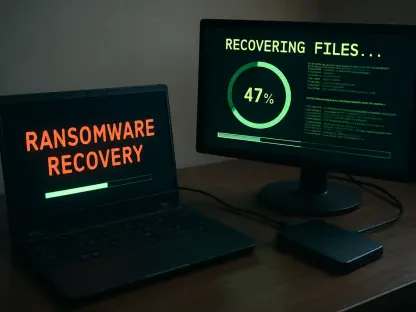Organizations increasingly rely on cloud computing for flexible and scalable solutions, which has spotlighted the critical importance of robust security measures. Recent discoveries, particularly related to privilege escalation in cloud functions, emphasize the need for comprehensive security frameworks. Insecure configurations can open the door to threat actors leveraging vulnerabilities across multiple cloud environments. With this in mind, implementing best practices is vital in ensuring the protection of sensitive data and systems.
Importance of Addressing Cloud Security Vulnerabilities
Mitigating security vulnerabilities in cloud platforms remains a paramount concern as organizations move more services and data into cloud environments. These platforms’ dynamic nature often requires complex security configurations, which, if overlooked, can lead to severe repercussions. The privilege escalation flaw through specific cloud function services highlights how attackers can exploit deployment processes for elevated access. It illustrates the need for organizations to remain vigilant around cloud security practices and policies. The alarming security challenge creates urgency in covering gaps through updated diligence and mindful security strategies.
Best Practices for Protecting Against Privilege Escalation
To protect against privilege escalation, which may arise from overly permissive configurations, organizations must employ a range of best practices. Ensuring precise access controls through the principle of least privilege is a foundational measure. By giving users only the access they need to perform their jobs, the risk is significantly reduced. Regular permission audits help maintain the integrity of access configurations, identifying any unnecessary or risky privileges.
Another essential aspect is the monitoring of all service accounts. This practice involves close observation of any unusual alterations or traffic patterns that could indicate a compromised system. Service accounts are regularly targeted for abuse due to their extensive permissions, so vigilant management and safeguarding of these accounts are imperative. Implementing advanced monitoring tools helps flag suspicious activities swiftly, allowing for quicker intervention to mitigate potential threats.
Techniques for Effective Cloud Network Mapping
Beyond specific security flaws, techniques such as ICMP discovery can pose risks in cloud network mapping. These techniques may enable attackers to determine the structure and vulnerabilities within a network. Using ICMP discovery methods can unintentionally expose the configuration of networks, leading to potential exploitation. It’s vital for organizations to exercise caution and apply stringent controls on these methods to prevent unauthorized probing.
Similarly, containerized environments require particular attention due to inherent security challenges. As more applications deploy in containers, safeguarding them becomes a priority. Best practices include maintaining up-to-date security patches, defining clear resource limits, and restricting inter-container communication. An incident analysis of well-documented breaches within container environments highlights valuable learning opportunities for security professionals, guiding the development and improvement of secure practices.
Importance of Constant Vigilance and Security Audits
Ongoing auditing and rigorous monitoring practices cannot be overstated in maintaining a secure cloud infrastructure. Enforcing the principle of least privilege consistently reduces the potential avenues for exploitation. Regular audit schedules ensure that account permissions remain accurate, relevant, and secure. Organizations employing comprehensive monitoring tools can detect anomalous behavior promptly, providing a strong defense against unauthorized access.
Examples from various enterprises illustrate how successful implementation of these tools has prevented intrusions and minimized potential losses. This approach underscores the necessity of active vigilance and continuous adaptation of security measures to evolving threats.
Continuous Improvement and Future Considerations
While cloud providers such as Google have implemented patches like those targeting GCP flaws, the persistence of potential threats requires ongoing efforts. The dynamic nature of cloud computing means that configurations must be regularly evaluated and updated to meet new security challenges. Organizations must invest in skill-building among their teams, ensuring they are equipped to manage complex security landscapes.
Going forward, exploring advanced security techniques and technologies can fortify defenses against evolving threats. Incorporating automated solutions that offer real-time reporting and adaptability to new threat patterns can significantly enhance security arsenals. To maintain an edge in cloud security, organizations must remain proactive in their approach, encouraging continual learning and innovation in their security practices.









